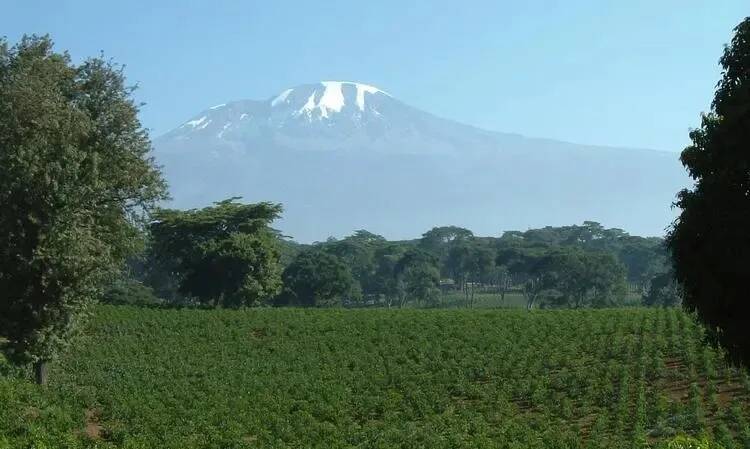Introduction to Kigoma, the coffee producing area of Tanzania, Africa
Africa is the second largest continent in the world, located in the southwest of the Eastern Hemisphere, across the north and south of the equator. Africa is a plateau continent with a vast area. The plateau accounts for more than 60% of Africa at an altitude of 500-1000 meters, and has many mountains, volcanoes, lakes and rivers. Because the earth crosses the equator, mainly tropical, the climate is hot, rainless and dry, and the annual average temperature of the whole continent is more than 20 ℃. Agriculture in Africa, which is rich in natural resources, is developed, and many countries are famous for producing coffee, such as Ethiopia, Kenya and Tanzania, among which Tanzania is known as a "coffee gentleman".

In the 19th century, when Tanzania was a German colony, the Germans introduced coffee and planted it in the Bukoba area, but the local Haya people were reluctant to replace food crops with coffee trees, so the coffee industry developed slowly.
After the first World War, the management of this area was transferred to the British. Even though the British planted more than 10 million coffee seedlings in Bukoba, they also had conflicts with the Haya. As a result, the saplings were uprooted, and the coffee industry still did not get a good development, so they began to move to the Chagga area to grow coffee.

In 1961, after Tanzania became independent, it focused on the coffee industry. Since the 1990s, the coffee industry in Tanzania has carried out a series of reforms. But in the late 1990s, coffee leaf rust hit northern Tanzania, which greatly reduced the number of coffee, so coffee cultivation once again moved to the south and the Kilimanjaro region. Thanks to the country's topography and climate, coffee is now a major agricultural cash crop in Tanzania.
Tanzania is located in eastern Africa, south of the equator, the terrain of the country is high in the northwest and low in the southeast, the eastern coast is lowland, and the western plateau accounts for half of the total area of the country. The East African Rift Valley runs from east to west from Lake Malawi to the north and south. In the northeast is Mount Kilimanjaro, the highest peak in Africa.
Due to its proximity to the equator, the eastern coast and inland lowlands have a savanna climate, while the western inland plateau has a tropical mountain climate, with an annual average temperature of 21 ℃-26 ℃. Although the country has less rainfall, with less than 1000 millimeters in 80 per cent of the region, Tanzania has many rivers and lakes and is rich in hydropower resources.
Coffee cultivation in Tanzania is currently divided into nine producing areas, with the relatively well-known ones being Kilimanjaro, Arusha, Ruvuma, Mbeya, Tarime and Kighoma.
Among them, Kilimanjaro is the most famous. Kilimanjaro is the highest mountain on the entire African continent, mainly composed of three extinct volcanoes, Kibo, Mavenzi and Sheila, with a maximum of 5895 meters. Coffee is grown on hillsides with an altitude of 1050-2500 meters above sea level. Volcanic soil and pure snow-melting water are the most suitable areas for growing coffee. On the front street, there is a washed iron pickup from the Kilimanjaro area, which tastes soft and sour, with citrus, berry, honey and nut flavors, soft tea taste and overall balance.
In addition, there are many coffee producing areas with good quality, such as Kighoma (Kigoma). The region, named after the regional capital city of Kigoma, is located in the north-western part of the country, adjacent to Burundi and Lake Tanganyika.
Lake Tanganyika is rich in natural resources, beautiful coastal scenery, pleasant climate, lush plants, growing patches of banana forests and oil palms, which provide shade and wind protection for coffee trees, as well as rich in aquatic resources. It makes the production of a lot of amazing coffee, but the local coffee industry is just in its infancy, and in recent years the government has begun to invest heavily in the region to finance the development of agriculture, fisheries and other industries in the region.
Important Notice :
前街咖啡 FrontStreet Coffee has moved to new addredd:
FrontStreet Coffee Address: 315,Donghua East Road,GuangZhou
Tel:020 38364473
- Prev

Not spoiled! The lucky guy who was driven crazy by the remarks posted a big-character poster!
▲ Click to pay attention| If the daily boutique coffee culture magazine coffee workshop sees a big "Note" posted on the bar, customers entering the door will probably stop and take a look. Recently, when some netizens visited a lucky cafe store, they were attracted by the word "attention" in front of the bar and noticed the precautions posted
- Next

Drug dealer conflict in Chiapas, Mexico! Nearly 600 people flee Mexico
According to Mexican and Guatemala officials recently, more than 500 Mexicans have fled to Guatemala to escape violent conflicts between drug cartels in Mexico. According to Mexican media reports, in recent times, the notorious Mexican Sinaloa drug trafficking group and another group called "Jalisco New Generation"
Related
- Being chased out of the rain in front of Starbucks?! Store: Sheltering from rain under umbrellas poses a safety hazard
- The white moonlight has changed?! Lucky launches "Big Winter Pear American"
- Hand-brewed coffee three-stage method, high-sweet and universal brewing method to share! What does the high sweet water level of hand-brewed coffee mean?
- What is the difference between raw, refined and full espresso coffee? How to extract espresso and taste good?
- A complete list of coffee bean names and their meanings! What is Yejia Shefi coffee? Where is Mantelin coffee?
- What grade does Arida Manor Kaduai coffee beans belong to? What treatment is Arida ASD slow anaerobic sun exposure?
- The milk tea cup becomes smaller?! Overlord Tea Girl launches a new "Return to Yunnan" series
- Accused of selling counterfeit and high-priced coffee beans! Well-known boutique coffee brand "Oukelao" bowed and apologized!
- How to make espresso dumplings? Can I eat coffee and glutinous rice balls together?
- Save the unformed and stagnant powder cakes in one second! What is the problem with stagnant water in the powder bowl of the espresso machine?

